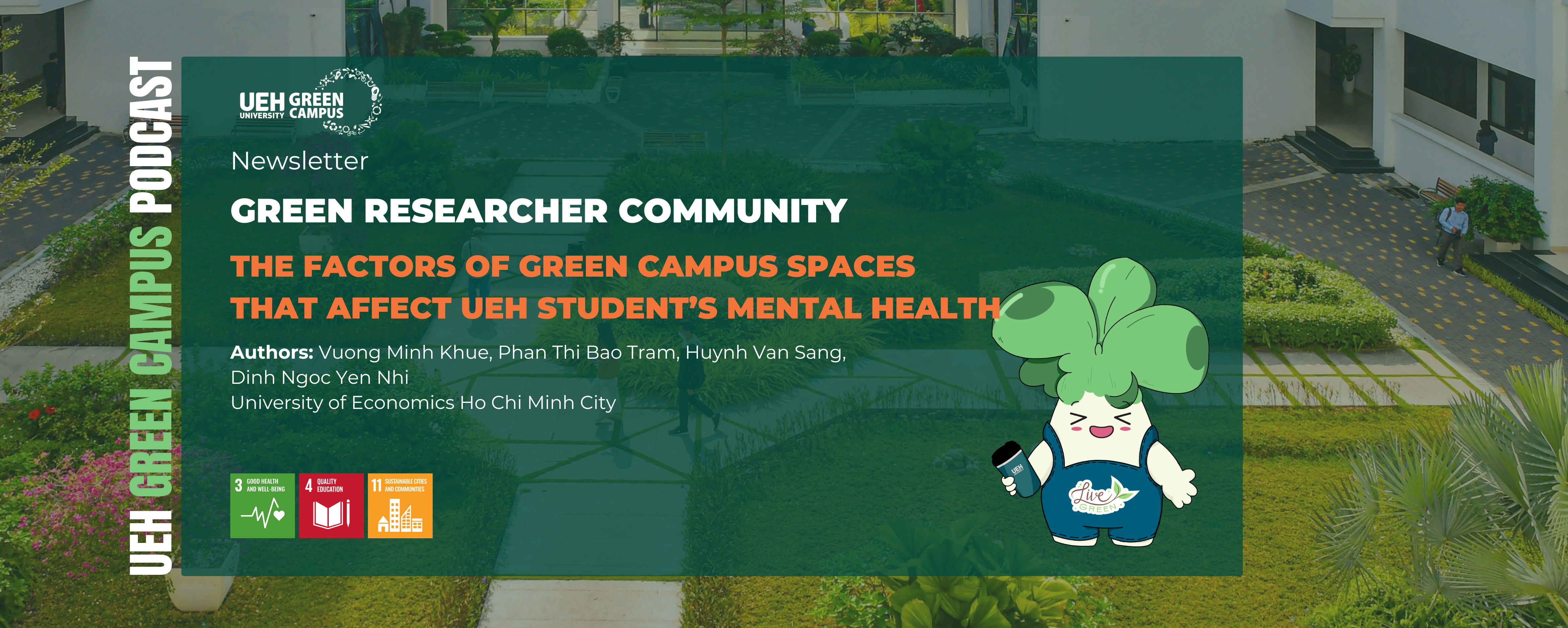Keywords: mental health, green campus, green space, university students
Amidst the pressures of studies, work, and life, many young people turn to nature as a way to find balance and recharge their energy. Therefore, the "green campus" model is gradually gaining attention as a solution that can bring comfort and improve the morale of students. Based on this reality, a research team from the University of Economics Ho Chi Minh City (UEH) conducted the study "Factors of Green Space within the Campus Influencing the Mental Health of UEH Students," aiming to identify aspects of green space that have a clear impact on students' academic performance and daily lives. This research contributes to suggesting practical solutions for building a healthier and more welcoming university environment.

Factors influencing the mental health of UEH students through green spaces.
First and foremost is physical sensation, reflecting how each individual perceives the natural elements around them, such as light, temperature, greenery, or water. These experiences, tho familiar, directly impact comfort or stress in daily academic life. Next is esthetic perception, which is linked to positive emotions when students are exposed to the beauty of the landscape - from the green of the leaves, the harmonious arrangement of space, to the small garden corners that evoke a sense of relaxation.
The third factor is psychological perception, which demonstrates how green spaces help students relieve stress, regain focus, and find a sense of mental well-being. Moments of rest under the trees or walks around the campus can become a "mental tonic" amidst the stressful pace of academic life. Finally, perceptions of public infrastructure reflect how students evaluate accompanying conditions such as cleanliness, safety, amenities, or the friendliness of the campus. This is an important factor for green spaces to truly become places that connect and support student life, rather than just being a landscape feature.
The harmonious combination of these four factors has created a comprehensive understanding among students regarding the quality of green space at UEH. And it is this very awareness that is the foundation for explaining why green spaces can positively impact mental health, from reducing stress to enhancing the quality of the learning experience in a university environment.
From Research to Action: Solutions for UEH Student Mental Health
The group's research yielded several notable findings regarding the mental health of UEH students, with the physical environment identified as the factor having the most direct and clear impact. A green, clean, airy, and well-maintained campus helps students reduce stress, maintain focus, and increase their sense of comfort. Conversely, a lack of green space makes students easily tired, reduces their learning efficiency, and makes them less connected to their surroundings. The presence of greenery and open spaces not only provides a sense of relaxation and safety but also fosters a sense of belonging, community spirit, and the ability to adapt to academic pressure.
Additionally, esthetic awareness has also been shown to have a positive correlation with mental health. Students who appreciate the beauty of the campus often have a more positive attitude and more stable emotions. Looking at greenery, flowers, or landscapes thru a window provides a relaxing and energizing effect, while also improving air quality, reducing noise, and regulating temperature, contributing to an enhanced learning environment.
Besides, awareness of public infrastructure also has a positive impact on mental health. A learning environment that ensures fresh air, clean water, and appropriate noise and temperature levels not only creates a pleasant atmosphere but also encourages physical activity, increases social interaction, reduces stress, and strengthens community spirit. Spacious, clean, and esthetically pleasing green spaces help improve students' physical, mental, and cognitive abilities.
Notably, the study shows that psychological awareness is not strongly correlated with mental health, contrary to some previous findings. The cause may stem from limitations in online survey methods and the research sample primarily focusing on first-year students, resulting in data that does not fully reflect the impact of green spaces on all UEH students.
Policies and solutions for developing green spaces in a university environment
Based on the research findings, the team proposes several key policy implications to support universities in conserving and developing green spaces, thereby improving students' mental health.
First, the physical perception factor was identified as having the strongest impact, confirming the importance of a clean, airy, and pleasant campus. Schools need to expand the area of natural green spaces, diversify plant species, add flexible shade structures, and maintain stable humidity to create ideal rest and relaxation areas. Green spaces should be interspersed between lecture halls or in easily visible locations to increase "green views" – an effective mood-boosting element – while also limiting urban noise, an indirect cause of stress in learning.
Regarding public infrastructure, schools need to invest in, maintain, and upgrade infrastructure in green areas, while also encouraging students to participate in caring for and preserving greenery thru existing environmental campaigns. This approach not only optimizes costs and manpower but also strengthens students' sense of community and responsibility toward their learning environment.
Beside, esthetic factors have been proven to have a clear and positive impact on mental health. The landscape not only needs plenty of greenery but also must be harmoniously designed and esthetically pleasing. Schools should maintain regular pruning and add flowers and plants with pleasant fragrances (such as lavender and chamomile) to create a relaxing space and reduce mental stress. Programs like "UEH Zero Waste Campus" can be replicated to encourage students to connect with nature, raise awareness of the value of green spaces, and diversify the campus ecosystem.
Finally, although the psychological cognitive factor did not show a clear correlation in this study, this could be due to limitations in the survey method. Therefore, UEH and other universities need to continue building positive messages, developing iconic green spaces, and promoting communication related to mental health, especially targeting freshmen – a group with limited experience in the learning environment.
The research team hopes these proposals will help universities more effectively leverage the value of green spaces, improve students' mental health, create a friendly and sustainable school ecosystem, and realize the vision of a "Green University" in the future.
The research paper has indirectly contributed to SDGs 3, 4, and 11. See all Research paper “The factors of green campus spaces that affect UEH Student’s mental health” HERE.
The authors: Vuong Minh Khue, Phan Thi Bao Tram, Huynh Van Sang, Dinh Ngoc Yen Nhi - University of Economics Ho Chi Minh City.
This article is part of the Green Research Community series with the message "Research Contribution for UEH Living Lab Green Campus" UEH sincerely invites the community to watch the next Green Research Community newsletter.
*To create maximum conditions for the development of the "UEH Green Researcher Community," members of the community will be able to attend scientific research methods classes related to the topics of Living Lab and Green Campus. Additionally, upon meeting the standards, the research team will receive a certificate from the UEH Sustainable University Project Board and financial support for a standard-compliant project.
More Information:
SDG 3 – Good Health and Well-being emphasizes the importance of ensuring comprehensive health and improving the quality of life for people of all ages. This includes reducing maternal and child mortality, preventing epidemics, increasing access to essential healthcare services and medicines, as well as encouraging healthy lifestyles. A healthy society depends not only on modern healthcare systems but also on active community participation in creating safe and healthy living environments.
SDG 4 – Quality Education seeks to guarantee that everyone has access to fair, inclusive, and quality education at all levels. Education goes beyond providing basic knowledge; it opens opportunities for skill development, creative thinking, and social responsibility, thereby helping individuals adapt to global changes and contribute to sustainable development.
SDG 11 – Sustainable Cities and Communities seeks to develop urban areas and communities that are resilient, safe, and sustainable by improving living environments, managing waste effectively, and ensuring access to basic services for all citizens. A sustainable city is not only about physical infrastructure but also about raising awareness and shaping residents’ behavior to protect their shared environment.
News, Photos: UEH Green Campus Project, UEH Youth Union - Student Association, UEH Communications and Partnership Development Department
Voiceover: Thanh Kieu







